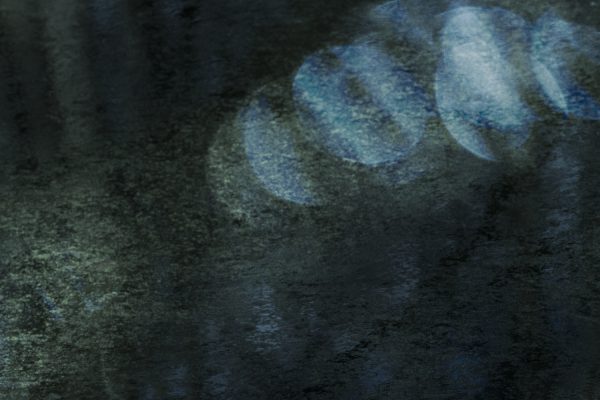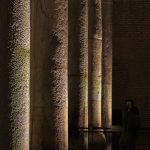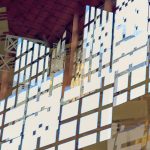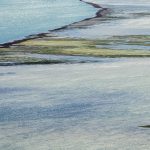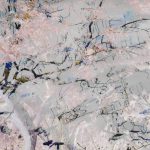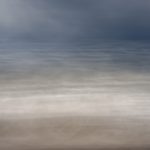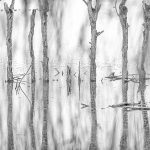There’s a long-standing controversy about whether photography (and this is especially true of landscape photography) should be a faithful representation of what the photographer actually saw. As AI becomes increasingly prevalent in photo processing and digital imaging, the discussion is starting to take on an almost paranoid tone. “How can we tell if this photo shows the truth?”
Almost three years ago, I wrote an essay called Photography and Reality. I concluded with the words, “Creativity requires personal integrity (being true to oneself) and originality (not following the herd).” I still stand behind those words 100%. My understanding of the controversy has evolved much further, so I’m picking up this theme again.
Not only do the roots of the controversy go back to the invention of the camera, but they are also embedded in art history and even in philosophy. Many excellent writers have dealt with the topic. I don’t pretend to say anything new, but, as I have strong feelings about it, I would like to present my personal thoughts on it.
One of the first attempts to use light to project an image of reality was in China, as early as the 5th century. They used a tiny hole (pinhole) in a wall to project what was outside the wall onto an opposing wall. It’s still a popular method to view a solar eclipse and it evolved into the Camera Obscura (which helped painters immensely by projecting an image onto the canvas so that they could paint on the projection).
I’m sure everyone is familiar with Plato’s discourse about humankind living in a cave and only knowing reality as a projection of shadows on the wall of the cave. The philosophical question here is, do we, can we know reality? Or is everything an illusion? I might go one step further and say, the only thing real is how we perceive things and how we respond to them, not what they are.
Looking at the history of painting, up until the 19th century, artists were expected (by their sponsors) to depict imaginary scenes inspired by heroic and religious themes. Realism (and Naturalism) were 19th century revolutionary art movements that replaced these images with paintings depicting the real world around the artist. Realism eventually gave birth to Impressionism and, eventually, to Modern Art.
By the birth of Impressionism, the technical progress of photography had taken the pressure off artists to depict things as accurately as possible. The Impressionists tried to get down on canvas an “impression” of how a landscape, thing, or person appeared to them at a certain moment in time. It was no longer a painting of a subject but a painting about a subject.
This doesn’t mean that all photographers saw as their mission the accurate, almost mechanical, depiction of reality. Some certainly did, and so a schism in the photographic world evolved.
The Pictorialists emerged in the late 1860’s. They approached the camera as a tool that, like a paintbrush, could be used to make an artistic statement. Tonality and composition were far more important than the accurate documentation of reality. These were often people from the wealthier classes who could afford photographic equipment. The word ‘amateur’ refers to someone who does their work out of love (the Latin amare).
On the other hand, there were the photographers earning a living from photography, often in portrait studios or as news reporters. They were more concerned about an accurate documentation of reality. Though these days we know that they often showed a flattered or even staged reality that showed their sponsors/customers what they wanted to see (and this is still true today).
Movements came and went, and two world wars turned the western world on its head. And, as people started breaking away from traditional morals and customs, new aesthetic values began to emerge. Cubism (doing away with the single-point perspective), Dada, and Surrealism accompanied the world into the First World War. The Modernist art movements were born. And with modernism came a different approach to reality. Distorting reality or even ignoring it totally was permissible, as long as the artist could express what they wanted to say.
In the world of photography, Photographic Expressionism emerged. It too does away with the need for any pretence of reality. Techniques like camera movement and multiple exposure, combined with extensive processing and sometimes even hand-finishing prints turn the camera into nothing more than a tool in the hands of the artist, capable of expressing emotions or concepts not necessarily tied to a photographic subject.
So how are we to gauge the value of a photograph if we have no idea how it was taken or processed? By the same means that we judge a painting or a sculpture. Does it speak to us? Does it use visual language to bring across an emotion or concept that we can connect to? It doesn’t matter whether it’s a ‘straight’ photograph, an abstract, or something in between. And, just as not everyone likes or ‘gets’ an abstract painting, not everyone will like or ‘get’ an abstract photo.
And just as some artists produce kitschy junk (that some people seem to like), so will some photographers produce kitschy junk. (AI will probably do an even better job of producing kitschy junk.) It seems to have its appeal; Instagram is full of it. Artistic quality has never been a thing of the masses.
Fortunately, there are growing groups of photographers and publications that embrace this freedom of expression and are willing to offer those starting out on this road their support and community.
